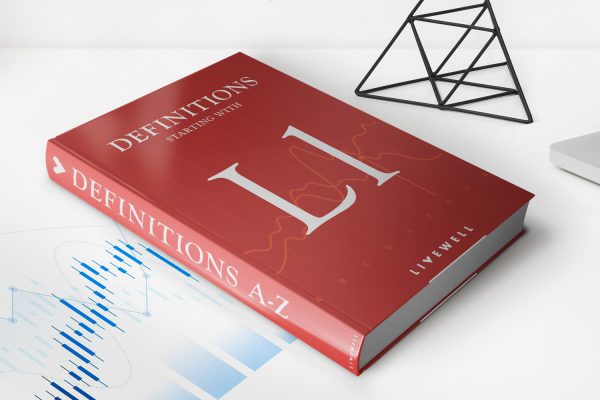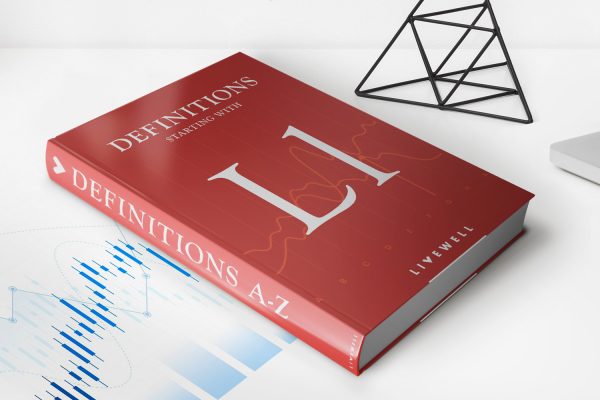

Finance
How Do Options Contracts Work?
Published: February 28, 2024
Learn how options contracts work in the world of finance and understand their role in investment strategies. Explore the basics and potential benefits of options trading.
(Many of the links in this article redirect to a specific reviewed product. Your purchase of these products through affiliate links helps to generate commission for LiveWell, at no extra cost. Learn more)
Table of Contents
- Understanding the Basics of Options Contracts
- Exploring the Nature of Options Contracts
- Understanding the Mechanics of Call Options
- Unveiling the Functionality of Put Options
- Unraveling the Mechanisms of Options Contracts
- Unveiling the Influential Variables in Options Pricing
- Exploring the Dynamic Terrain of Options Market Participation
- Navigating the Opportunities and Dynamics of Options Contracts
Introduction
Understanding the Basics of Options Contracts
Options contracts are powerful financial instruments that provide investors with the opportunity to hedge against risk, speculate on price movements, and generate potential profits. In the world of finance, options are versatile tools that offer a wide range of strategies for traders and investors. Whether you're new to the concept or seeking to deepen your understanding, this article will delve into the fundamentals of options contracts, how they work, and the factors influencing their dynamics.
Options contracts are derivative securities that grant the holder the right, but not the obligation, to buy or sell an underlying asset at a predetermined price within a specified time frame. These underlying assets can include stocks, bonds, commodities, or even other derivatives. The flexibility and leverage associated with options make them a popular choice for market participants looking to manage risk or capitalize on market movements.
Throughout this article, we will explore the two primary types of options contracts – call options and put options – and elucidate their distinctive characteristics. Additionally, we will delve into the mechanics of options contracts, shedding light on how they function and the factors that influence their pricing and behavior in the market. Understanding the risks and potential rewards of options trading is crucial for anyone considering incorporating them into their investment portfolio.
By gaining insight into the intricacies of options contracts, investors can make informed decisions and construct strategies that align with their financial objectives. Whether you aim to safeguard your portfolio against adverse price movements or seek to amplify your returns through speculation, comprehending the workings of options contracts is essential. Join us on this journey as we demystify the realm of options trading, empowering you to navigate the financial markets with confidence and acumen.
What Are Options Contracts?
Exploring the Nature of Options Contracts
Options contracts are financial instruments that provide the holder with the right, but not the obligation, to buy or sell an underlying asset at a predetermined price within a specified time frame. These contracts are categorized as derivatives, as their value is derived from the performance of an underlying asset, such as stocks, commodities, or indices. Unlike traditional stock trading, where investors buy and sell the underlying asset itself, options trading involves the exchange of contracts that represent the opportunity to purchase or offload the asset at a later date.
Options contracts are typically structured with standardized terms, including the expiration date, strike price, and the underlying asset. The expiration date denotes the deadline by which the option must be exercised, while the strike price specifies the price at which the underlying asset can be bought or sold. Understanding these fundamental components is essential for navigating the options market effectively and formulating strategic trading decisions.
One of the key distinguishing factors of options contracts is the asymmetrical nature of the rights they confer. Call options grant the holder the right to buy the underlying asset, while put options provide the right to sell the asset. This asymmetry allows investors to capitalize on both bullish and bearish market sentiments, offering a versatile approach to profiting from price movements.
Options contracts are traded on exchanges, providing market participants with a platform to buy and sell these financial instruments. The options market facilitates a spectrum of trading strategies, ranging from conservative approaches aimed at risk mitigation to aggressive tactics focused on speculative gains. As such, options contracts cater to a diverse array of investment objectives, making them a valuable tool for portfolio management and capital deployment.
By grasping the fundamental nature of options contracts, investors can harness their potential to enhance portfolio performance and manage risk effectively. In the subsequent sections, we will delve deeper into the specific types of options contracts – call options and put options – and elucidate their respective characteristics and applications in the financial markets.
Call Options
Understanding the Mechanics of Call Options
Call options represent a type of options contract that grants the holder the right, but not the obligation, to buy a specified quantity of an underlying asset at a predetermined price, known as the strike price, within a predefined time frame. This time frame extends until the expiration date of the option. Call options are associated with bullish market sentiments, as they enable investors to benefit from potential price appreciation in the underlying asset.
When an investor purchases a call option, they are essentially securing the opportunity to buy the underlying asset at the agreed-upon strike price, irrespective of the prevailing market price at the time of expiration. This ability to lock in a purchase price can be advantageous in scenarios where the investor anticipates a rise in the value of the underlying asset. By holding a call option, the investor stands to profit from the price differential between the strike price and the market price at the time of exercise.
One of the key advantages of call options is the limited risk they entail. The maximum potential loss for the holder of a call option is limited to the premium paid to acquire the option. This characteristic makes call options an attractive instrument for leveraging market opportunities while defining the extent of potential downside exposure.
Call options can be utilized in various trading strategies, including speculative plays on anticipated price upswings, hedging against short stock positions, and generating income through covered call writing. The versatility of call options makes them a valuable tool for investors seeking to tailor their strategies to specific market conditions and investment objectives.
Understanding the dynamics of call options empowers investors to navigate the options market with confidence, enabling them to capitalize on upward price movements while managing risk effectively. As we delve further into the realm of options trading, we will explore the intricacies of put options and elucidate their role in providing investors with a comprehensive toolkit for engaging with the financial markets.
Put Options
Unveiling the Functionality of Put Options
Put options embody a type of options contract that furnishes the holder with the right, but not the obligation, to sell a specified quantity of an underlying asset at a predetermined price, known as the strike price, within a predefined time frame. Put options are linked to bearish market sentiments, as they afford investors the opportunity to profit from potential price depreciation in the underlying asset.
When an investor acquires a put option, they secure the ability to sell the underlying asset at the agreed-upon strike price, regardless of the prevailing market price at the time of expiration. This capability to lock in a selling price can be advantageous in scenarios where the investor foresees a decline in the value of the underlying asset. By holding a put option, the investor stands to gain from the price differential between the strike price and the market price at the time of exercise.
Put options offer a valuable mechanism for risk management, particularly in volatile market conditions. They provide investors with the means to protect their portfolios from potential downside risks, as the value of put options tends to increase when the price of the underlying asset decreases. This inverse relationship with price movements empowers investors to hedge against adverse market dynamics and limit potential losses.
Similar to call options, put options can be employed in a spectrum of trading strategies, including speculative plays on anticipated price downturns, insurance against long stock positions, and generating income through cash-secured put writing. The versatility of put options equips investors with a comprehensive toolkit for navigating diverse market scenarios and tailoring their investment approaches accordingly.
By comprehending the nuances of put options, investors can adeptly navigate the options market, leveraging the potential of these instruments to manage risk and capitalize on downward price movements. As we delve deeper into the realm of options trading, we will elucidate how options contracts function and the factors that influence their behavior in the dynamic landscape of the financial markets.
How Options Contracts Work
Unraveling the Mechanisms of Options Contracts
Options contracts operate based on the principle of granting the holder the right, but not the obligation, to buy or sell an underlying asset at a predetermined price within a specified time frame. This fundamental characteristic endows options with a degree of flexibility and strategic value, enabling investors to construct diverse trading and investment approaches.
Upon entering into an options contract, the buyer pays a premium to the seller in exchange for the rights conferred by the contract. This premium is the cost of acquiring the option and is determined by various factors, including the volatility of the underlying asset, the time remaining until expiration, and the prevailing interest rates. The seller, also known as the writer of the option, receives the premium and assumes the obligation to fulfill the terms of the contract if the buyer decides to exercise their rights.
Options contracts can be exercised in two ways: through automatic exercise, where the contract is executed if it is in-the-money at expiration, or through early exercise, where the holder chooses to exercise the option before the expiration date. The decision to exercise an option is influenced by factors such as the price of the underlying asset, market conditions, and the time value remaining in the option.
For call options, if the market price of the underlying asset exceeds the strike price, the option is considered in-the-money, as the holder can purchase the asset at a lower price than its current market value. Conversely, in the case of put options, if the market price of the underlying asset is below the strike price, the option is in-the-money, as the holder can sell the asset at a higher price than its current market value. In such scenarios, the option holder may choose to exercise the option to capitalize on the favorable price differential.
Options contracts also facilitate trading in the secondary market, allowing investors to buy and sell existing options contracts before expiration. This secondary market provides liquidity and flexibility, enabling investors to adjust their positions, realize profits, or cut losses without being bound by the original expiration date of the contract.
By comprehending the operational dynamics of options contracts, investors can strategically leverage these instruments to manage risk, speculate on price movements, and optimize their investment portfolios. As we delve into the factors influencing options contracts and the risks and benefits associated with options trading, we will further illuminate the multifaceted nature of these financial instruments.
Factors Affecting Options Contracts
Unveiling the Influential Variables in Options Pricing
Options contracts are influenced by a myriad of factors that collectively contribute to their pricing and behavior in the financial markets. Understanding these factors is essential for investors seeking to navigate the options landscape effectively and construct informed trading strategies.
1. Underlying Asset Price: The price of the underlying asset plays a pivotal role in determining the value of an options contract. For call options, as the price of the underlying asset rises, the potential for the option to be in-the-money increases, elevating its value. Conversely, for put options, a decrease in the price of the underlying asset enhances the likelihood of the option being in-the-money, augmenting its worth.
2. Strike Price: The relationship between the strike price of an option and the current market price of the underlying asset influences the intrinsic value of the option. In-the-money options, where the strike price is favorable compared to the market price, command a higher intrinsic value, whereas out-of-the-money options possess no intrinsic value and are solely comprised of time value.
3. Time to Expiration: The remaining time until the expiration of an options contract impacts its value. As the expiration date approaches, the time value of the option diminishes, as there is less time for the underlying asset’s price to fluctuate favorably. This phenomenon is known as time decay and is a critical consideration for options holders and writers alike.
4. Volatility of the Underlying Asset: The degree of price fluctuation and volatility exhibited by the underlying asset influences the pricing of options contracts. Higher volatility increases the potential for substantial price movements, thereby augmenting the value of options contracts, which are inherently leveraged instruments.
5. Interest Rates: The prevailing interest rates impact the pricing of options through their influence on the cost of carry for the underlying asset. Changes in interest rates can affect the cost of holding the asset until the expiration of the option, thereby influencing the overall value of the option.
6. Dividends: For options linked to stocks, the payment of dividends by the underlying company can impact the pricing of options contracts. Anticipated dividend payments can influence the value of options, particularly in the case of call options, where dividends can reduce the price appreciation potential of the underlying stock.
By comprehending the interplay of these influential factors, investors can adeptly assess the pricing and dynamics of options contracts, enabling them to formulate strategic trading decisions and capitalize on market opportunities. As we delve into the risks and benefits of options trading, we will further elucidate the implications of these factors in the context of options market dynamics.
Risks and Benefits of Options Trading
Exploring the Dynamic Terrain of Options Market Participation
Options trading presents investors with a spectrum of risks and benefits, offering a versatile platform for capital deployment and risk management. Understanding the nuances of options trading is paramount for individuals seeking to harness the potential of these financial instruments while navigating the associated complexities.
Risks:
1. Limited Duration: Options contracts possess a finite lifespan, and their value is contingent on the price movements of the underlying asset within the designated time frame. As such, the time-sensitive nature of options exposes investors to the risk of time decay, where the value of the option diminishes as the expiration date approaches.
2. Volatility Exposure: Options trading entails exposure to the inherent volatility of financial markets. Price fluctuations in the underlying asset can impact the value of options contracts, potentially leading to substantial gains or losses for investors.
3. Potential Loss of Premium: The premium paid to acquire options contracts represents the maximum potential loss for the holder. In scenarios where the anticipated price movements do not materialize, the premium paid is at risk of being eroded without the corresponding benefit of profitable price differentials.
Benefits:
1. Leverage: Options contracts offer investors the opportunity to gain exposure to the price movements of the underlying asset at a fraction of the cost of purchasing the asset itself. This leverage can amplify potential returns, enabling investors to capitalize on market opportunities with a smaller upfront investment.
2. Diverse Strategies: The versatility of options contracts allows for the implementation of diverse trading strategies, including hedging against portfolio risks, generating income through covered call writing, and speculating on price movements. This flexibility empowers investors to tailor their approaches to specific market conditions and investment objectives.
3. Risk Mitigation: Options can serve as effective tools for managing portfolio risks and safeguarding against adverse market dynamics. Strategies such as protective puts and covered calls provide investors with mechanisms to mitigate downside exposure and enhance the resilience of their investment portfolios.
By comprehensively evaluating the risks and benefits of options trading, investors can make informed decisions and construct strategies that align with their financial objectives and risk tolerance. The multifaceted nature of options contracts equips market participants with a diverse toolkit for engaging with the financial markets, offering avenues for speculation, risk management, and portfolio optimization.
Conclusion
Navigating the Opportunities and Dynamics of Options Contracts
Options contracts represent a dynamic and versatile domain within the financial markets, offering investors a spectrum of strategic opportunities and risk management tools. By delving into the intricacies of options trading, individuals can gain a comprehensive understanding of these instruments and harness their potential to optimize investment portfolios and capitalize on market movements.
Understanding the fundamental nature of options contracts, including call options and put options, empowers investors to construct informed trading strategies tailored to specific market conditions and investment objectives. The asymmetrical rights conferred by call and put options provide avenues for capitalizing on bullish and bearish market sentiments, offering a diverse toolkit for speculation and risk mitigation.
Factors such as the price of the underlying asset, time to expiration, volatility, interest rates, and dividends collectively influence the pricing and behavior of options contracts. By comprehending these influential variables, investors can adeptly assess the dynamics of options contracts and make strategic decisions aligned with market dynamics.
The risks and benefits of options trading underscore the multifaceted nature of these financial instruments. While options trading entails exposure to time decay and market volatility, it also offers opportunities for leveraging market movements, implementing diverse strategies, and mitigating portfolio risks. By weighing these factors, investors can navigate the options market with acumen and agility, capitalizing on opportunities while managing potential downsides.
As market participants continue to engage with options contracts, the landscape of options trading evolves, presenting new opportunities and challenges. By remaining attuned to market dynamics, staying informed about macroeconomic trends, and honing their understanding of options pricing and behavior, investors can position themselves to optimize their participation in the options market.
Ultimately, the realm of options contracts is a dynamic arena that beckons with opportunities for strategic engagement and portfolio optimization. By embracing a comprehensive understanding of options contracts and the factors influencing their dynamics, investors can navigate the financial markets with confidence, leveraging the potential of these instruments to pursue their financial objectives and adapt to the ever-changing landscape of global finance.














